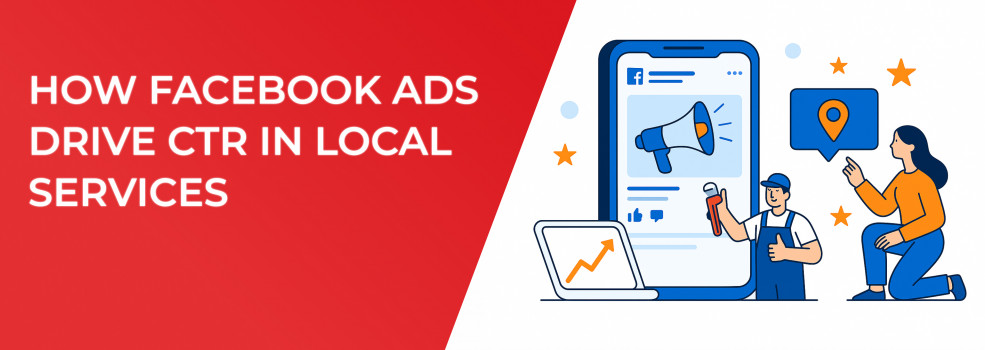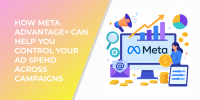Getting local customers to click is half the battle. When your repair shop, yoga studio, or lawn-care crew shows up in the right person’s feed, that single tap often turns into a phone call or an online booking the very same day. In this guide we’ll look at the building blocks of an ad that earns a good Facebook ad CTR, show you how to tweak campaigns so they outperform the average click through rate on Facebook ads, and wrap everything in plain-English steps you can try this afternoon.
Why CTR Matters for Local Services
Before diving into tactics, let’s zoom out. Click-through rate (CTR) is the percentage of people who see your ad and decide to visit your landing page, call-to-action (CTA) button, or shop page. A higher CTR signals that your creative and targeting resonate with neighbours who actually need your service. It also lowers costs because Facebook ad performance rewards relevance: strong CTRs often bring cheaper average cost per click Facebook and better placement across feed, Reels, and stories.
Ad impressions Facebook tells you how many times the ad appeared. Pair that with CTR and you can spot whether an ad is fresh and compelling or drifting into fatigue.
Benchmarks You Should Track
Below are baseline numbers pulled from Meta industry data, agency case studies, and LeadEnforce accounts in home services, hospitality, and professional practices. Treat them as guide-rails, not gospel.
-
Facebook advertising click through rates for local services: 1–2%
-
Industry average CTR for display ads across all channels: roughly 0.9%
-
Average click through rate on Facebook ads when creative is localised: often 2.5%+
Local-service ads often beat broader display benchmarks when creative is dialed in.
Want the freshest industry numbers? Our Average Click-Through Rate for Facebook Ads in 2025 study breaks down CTR by niche and ad format.
If you land under those figures, prioritise fixing creative or targeting before raising budget. Surpass them and you’re ready to scale spend or switch to purchase-driven bidding models.
After benchmarking, you’re ready to build the ad itself.
Anatomy of a High-CTR Local Ad
A well-performing post may look simple, yet five specific ingredients almost always appear in campaigns that beat the industry benchmark CTR:
-
Hyper-local targeting: ZIP-code drops or two-kilometre radius pins limit wasted impressions.
-
Real-world creative: storefront shots, staff photos, or a landmark locals recognise usually outperform stock images and boost good CTR on Facebook ads.
-
Benefit-led copy: focus on outcome and timing — “90-Minute Leak Repair in Buda Today” outranks “Trusted Plumber Since 1995”.
-
Single, urgent CTA: Book Now, Reserve Table, or Get Quote. One button, one action.
-
Facebook Pixel (or Conversions API) tracking: links clicks to bookings so Meta can optimise for revenue, not vanity clicks.
When these five align, we often see average click through rate on Facebook ads jump from 1% to well over 3% in less than two weeks of testing, with parallel lifts in call volume and walk-ins.
For a deeper primer on micro-targeting strategy, read Facebook Ad Targeting 101: How to Reach the Right Audience.
A quick note before moving on: if creative stalls, check ads frequency. Once users see the same ad 3+ times, CTR usually dips. New images and refreshed copy restore momentum.
Optimisation Tactics That Move the Needle
Great structure is a start, but the next gains come from tuning Facebook’s delivery system. Think of the table below as your miniature toolbox.
Before you read it, recognise that each switch affects spend and pacing, so test one or two at a time and watch results for at least three days. After the table, you’ll find extra context so the tactics stick.
The table covers must-know levers, but let’s put them into a local-business context. Campaign budget optimization is perfect for restaurants running lunch-versus-dinner ad sets because spend automatically shifts when lunchtime clicks slow. Advantage campaign budget digs deeper, learning which hour of day and which micro-audience segment yields the cheapest scheduled appointment.
Before applying these levers, make sure your pixel or Conversions API is firing on every significant event — view content, add to cart, schedule, complete registration. Otherwise Meta can’t optimise beyond the click.
Measuring and Iterating
Lists are handy, yet practical steps turn theory into bookings. Here’s how to keep momentum once campaigns are live.
First, drill into more than CTR. Track cost per landing-page view, cost per registration, and eventual sales. If CTR climbs but average cost per click Facebook spikes, your margin erodes. Lots of clicks but no sales? See Facebook Ads Not Converting: How To Fix It for a step-by-step rescue plan.
Second, compare weekday versus weekend performance. Service businesses often see weekend spikes when residents tackle chores. Duplicate your best ad set, restrict delivery to Saturday–Sunday, and watch the Facebook ad reach among homeowners climb.
Third, keep tests small. Swap one headline, one image, or one CTA at a time and wait until each variant hits 1,000 impressions. Tiny gains compound over weeks.
Finally, protect your funnel from fatigue. Monitor ad impressions Facebook against ads frequency. Refresh creative whenever frequency creeps above 3 and CTR drops.
Quick Action Plan
Adding yet another to-do list can feel heavy, so consider this a checklist you can follow between customer jobs or coffee breaks.
When CTR rises, real-world bookings follow — often the same day.
-
Pull last month’s Facebook ad performance report and jot down CTR, CPC, and lead-quality notes.
-
Set a 20 % lift target: aim to beat the average click through rate on Facebook ads in six weeks.
-
Turn on campaign budget optimization and rewrite headlines so they speak to location and urgency.
Working with tight budgets? Our guide on Campaign Optimization for Facebook Ads with Small Daily Budgets shows how to squeeze every euro. -
Install the Facebook Pixel (or switch to Conversions API) on every booking or quote page.
-
Automate repetitive tasks with LeadEnforce: fresh movers in your postcode drop straight into best-performing ad sets.
-
Expand once profitable: upsell seasonal maintenance or premium packages using the same Facebook advertising best practices.
When you hit your CTR goals, scale without breaking performance using The Science of Scaling Facebook Ads Without Killing Performance.
Your goal is progress, not perfection. Tiny tweaks stack up over time and reduce cost per booked job.
Wrapping Up
Local marketing used to rely on door hangers, billboards, and hoping passers-by noticed. Today, a precisely-targeted feed post can reach homeowners five streets away, and detailed dashboards reveal how every euro performs. Focus first on Facebook Ad CTR, measure gains against the industry benchmark CTR, then layer optimisation levers such as advantage campaign budget and conversion based optimization. With each adjustment you edge closer to a steady rhythm of high-quality leads.
Remember: the businesses that win aren’t the ones who spend the most, they’re the ones who iterate the fastest. Put these tips into play, watch your Facebook ad performance climb, and enjoy the uptick in bookings that follows.

